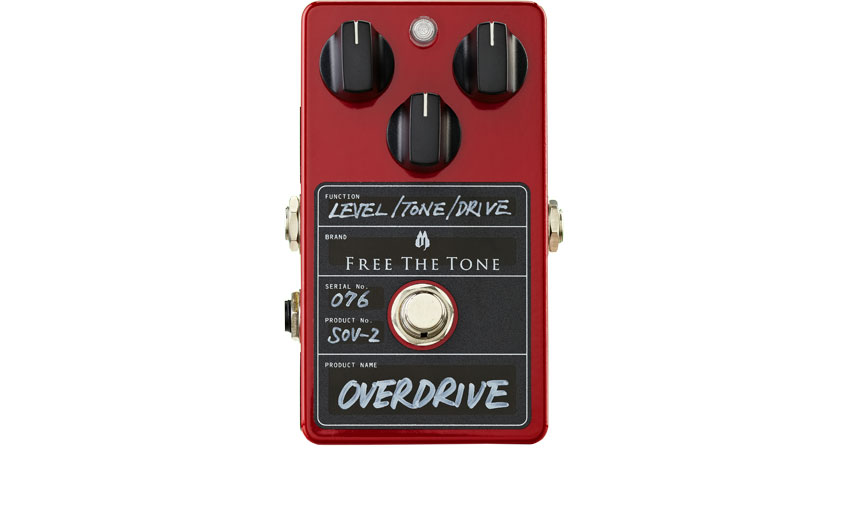MusicRadar Verdict
If you want slightly less gain, more headroom and to be Very Serious about the modern, transparent-sounding drive that serves the likes of Matt Schofield so well, the SOV-2 is for you. This iteration isn't cheap, but coming from the very hands of its designer, the custom kudos is undeniable.
Pros
- +
Top notch build quality. Great modern overdrive sounds.
Cons
- -
Price.
MusicRadar's got your back
There are a handful of overdrives that have created their own folklore. The TS808 and TS9 Ibanez Tube Screamers qualify, as does the near-mythical Klon Centaur. We'd argue that the SOV series is also acquiring a legend all its own, thanks in part to UK blues talent Matt Schofield, who has been using a custom-made SOV-2 for years, and who has also recently announced his own FTT signature version.
"Unlike most overdrives, early SOV-2s used a circuit that boosted internal voltage to +/-15V, with a whopping 90mA current draw"
The reputation is deserved. Unlike most overdrives, early SOV-2s used a circuit that boosted internal voltage to +/-15V, with a whopping 90mA current draw (around 10 times that of a 'normal' overdrive), giving the pedal more dynamic headroom and clarity for players who want the minimal amount of tone degradation and compression.
The current, standard Providence SOV-2 Stampede Overdrive still specs those numbers, though designer Yuki Hayashi maintains that his Free The Tone iteration is a more evolved entity. A peek inside confirms that the circuit and layout look very similar, but there are some different components, for sure. Back in the practical world, the big current draw means just two hours from an alkaline nine-volt battery - the advice is to use a mains adaptor.
Other than that, the 'standard' SOV-2 features remain: level, tone and drive controls and, well, that's it! The hand-written labels give that ultra-boutique vibe, while Yuki Hayashi's signature on the front edge confirms the main man's personal involvement.
Unlike the other two pedals on test, the SOV-2 has a straight true bypass switching design instead of 'HTS' - more later.
Sounds
"The SOV-2 can give you a strong, cleanish boost through to a thick overdrive"
The SOV-2 can give you a strong, cleanish boost through to a thick overdrive. Overall, the character has a punch in the midrange, but doesn't lop bass and treble off, as you might expect from a Tube Screamer.
Thus, you can achieve darker, later SRV Strat tones, through brighter, more present John Mayer-isms, even harmonically packed Robben Ford or David Grissom sounds with 'buckers and a more gained amp.
Want all the hottest music and gear news, reviews, deals, features and more, direct to your inbox? Sign up here.
How different is it from the current standard Providence SOV-2? Not wildly, it should be said. As you can hear in the accompanying A/B demo, the basic tone is very similar. Where you start to notice the difference is in the room, as the volume heads upwards. And by God it sounds good loud.
'More of everything' is the reductive explanation - higher headroom before compression, enhanced playing dynamics and a bigger sound overall. Jamming with a mildly overdriven amp and everything at two o'clock on the pedal, it's hard to stay away from Larry Carton and earlier Robben Ford territory.
